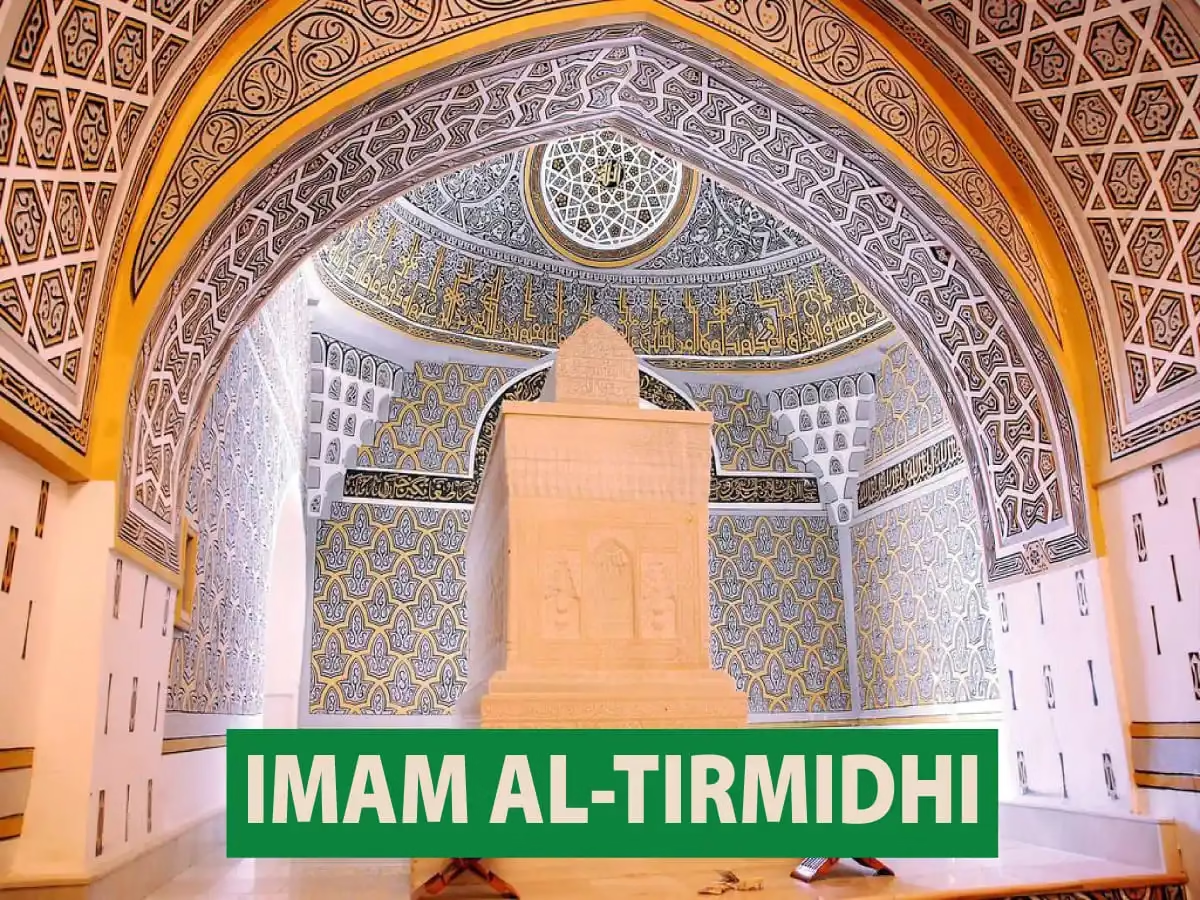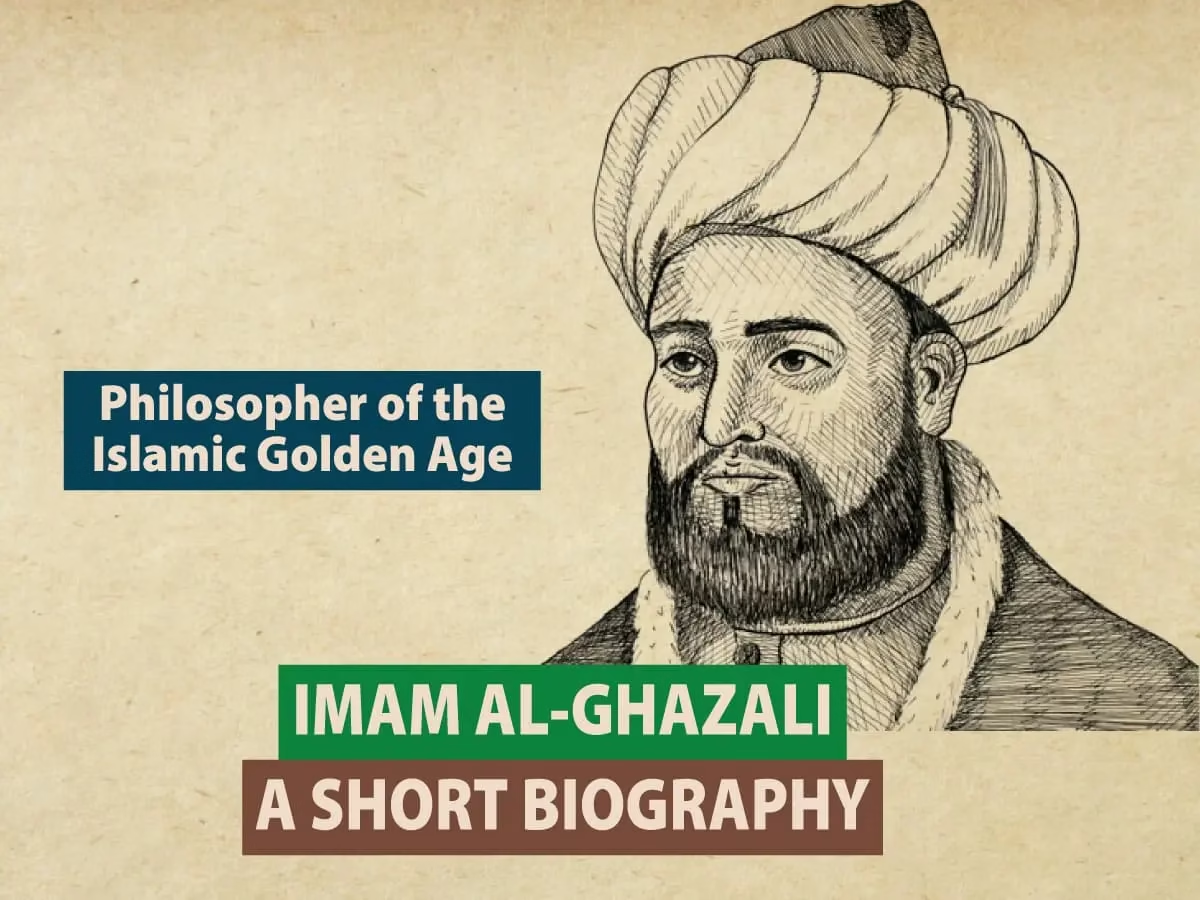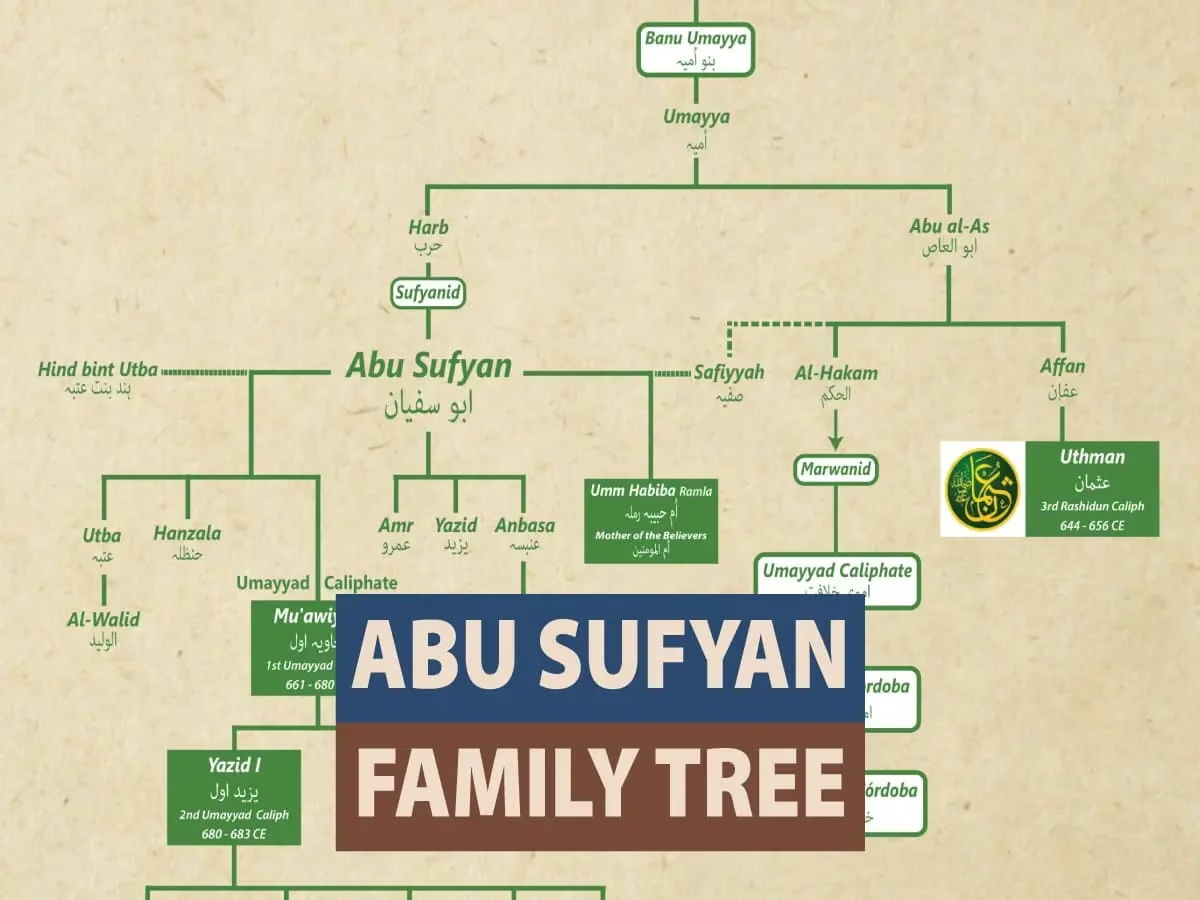Ayatollah Ali Hosseini Khamenei (b. 1939) is the current Supreme Leader of the Islamic Republic of Iran, a position he has held since 1989. As the highest-ranking political and religious authority in Iran, Khamenei’s influence spans not only across Iranian state institutions but also deeply into the religious and ideological fabric of the country. His life reflects a fusion of religious scholarship, revolutionary activism, and political leadership.
Early Life and Ancestry
Ali Khamenei was born on July 17, 1939, in Mashhad, one of Iran’s holiest cities. His family are Sayyeds—descendants of the Prophet Muhammad —through the line of Imam Husayn ibn Ali, son of Ali ibn Abi Talib. This gives his lineage deep spiritual significance in Shi’a Islam.
His father, Seyyed Javad Khamenei, was a prominent religious scholar originally from Tabriz, known for his piety and simplicity. The Khamenei family belonged to the Twelver Shia tradition and lived modestly, emphasizing religious education and discipline.
Religious Education
Khamenei began his Islamic studies in Mashhad at a young age. He later moved to Najaf (Iraq) and then Qom (Iran), where he studied under some of the most influential Shia scholars, including Ayatollah Khomeini—the future leader of the Islamic Revolution.
He became well-versed in fiqh (Islamic jurisprudence), Quranic exegesis, and Arabic literature, and later began teaching while continuing his political activism.

Revolutionary Activism
During the 1960s and 70s, Khamenei was an active opponent of the Pahlavi monarchy. He was imprisoned multiple times by SAVAK (Shah’s secret police) for his involvement in revolutionary movements and speeches supporting Ayatollah Ruhollah Khomeini.
His revolutionary activities positioned him as one of the key clerics who helped shape the Islamic movement that culminated in the 1979 Iranian Revolution, which overthrew Shah Mohammad Reza Pahlavi.
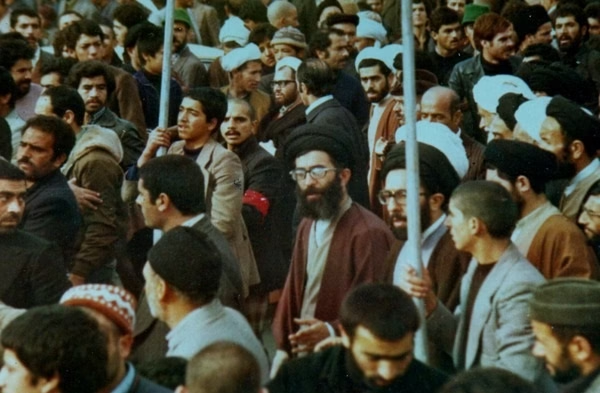
See Also: Shia Imams Family Tree
Political Career
After the revolution, Ali Khamenei quickly rose to political prominence:
- Served as a member of the Assembly of Experts
- Appointed as Tehran’s Friday Prayer Imam
- Elected as a Member of Parliament (Majlis)
- Became President of Iran (1981–1989) after the assassination of Mohammad Ali Rajai
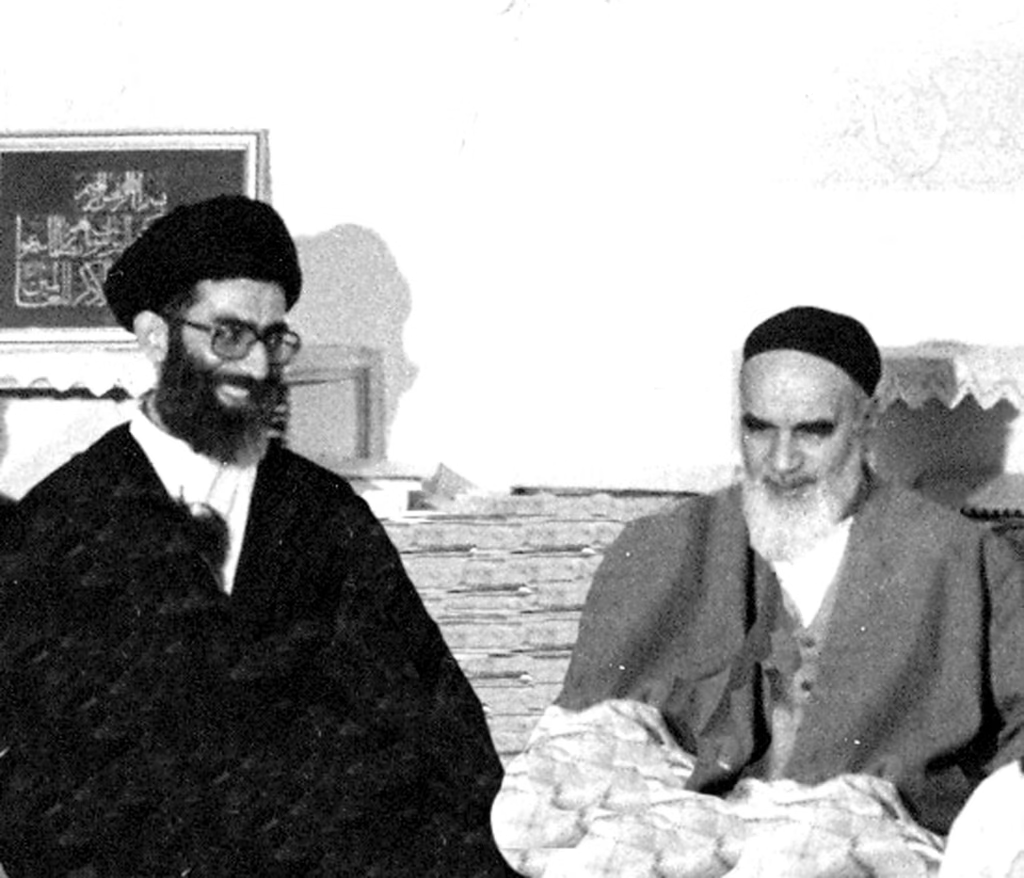
Despite not holding the formal title of Grand Ayatollah at the time, he was appointed as Supreme Leader following the death of Ayatollah Ruhollah Khomeini in 1989—an appointment justified by a constitutional amendment and political consensus.
Supreme Leadership (1989-Present)
As Rahbar (Leader) of Iran, Khamenei holds the highest authority in the Islamic Republic, overseeing:
- The Armed Forces, including the powerful Islamic Revolutionary Guard Corps (IRGC)
- The judiciary and intelligence services
- The Guardian Council and Assembly of Experts
- Foreign policy, particularly regarding the U.S., Israel, and the Islamic world
He is also regarded as the Marja’ al-taqlid (source of emulation) for many Shi’a Muslims inside and outside Iran.
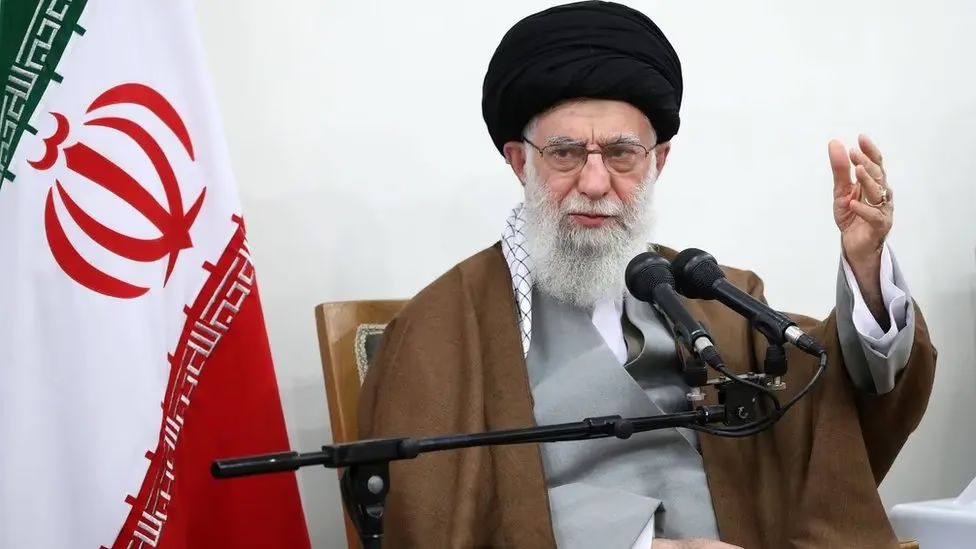
Ali Khamenei’s Family
Ayatollah Khamenei is married to Mansoureh Khojasteh Bagherzadeh, and they have six children, including:
- Mostafa Khamenei
- Mojtaba Khamenei – often speculated as his potential successor
- Masoud Khamenei
- Meysam Khamenei
- Hoda Khamenei
- Boshra Khamenei
He is known for living a simple and austere lifestyle, maintaining a deep connection with religious scholarship despite his political role.
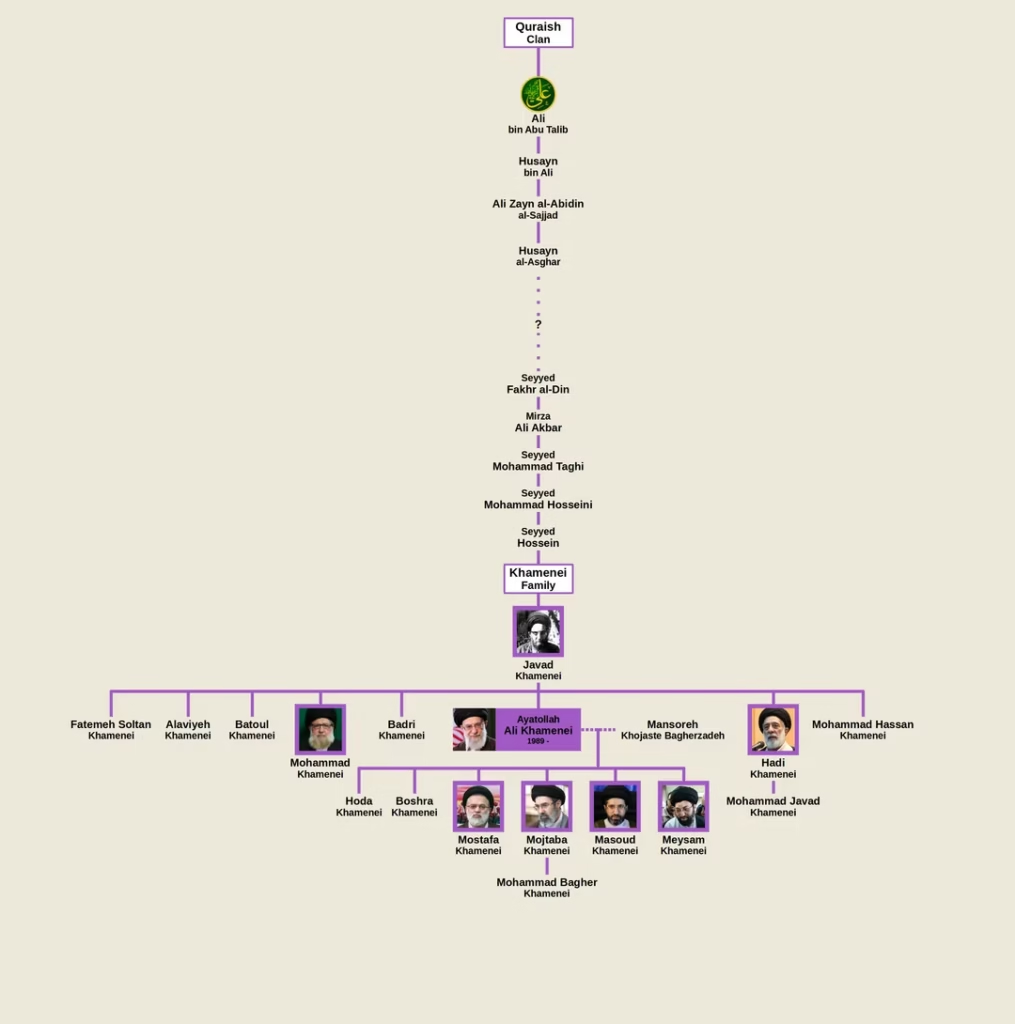
See Also: Ali Khamenei Family Tree
Works and Writings
In addition to his political and religious leadership, Ayatollah Khamenei is a prolific writer, translator, and intellectual. His works reflect a broad interest in Islamic revival, anti-colonial thought, ethics, youth development, and Western philosophy.
Selected Works:
- Islamic Thought and Western Culture – A critique of Western dominance over Muslim societies.
- An Outline of Islamic Thought in the Qur’an – His lectures on the Qur’an, addressing key ideological concepts.
- The Spirit of Tawheed (Monotheism) – A discussion on the spiritual and social implications of belief in one God.
- On the Islamic Government – A work inspired by and aligned with Ayatollah Khomeini’s vision of Wilayat al-Faqih.
- Selected Translations:
- He translated works of Sayyid Qutb (Egyptian Islamic thinker), including “Future in Our Hands”
- Also translated works by Seyyed Qutb’s brother, Muhammad Qutb, into Persian.
In addition to these, Khamenei has written and delivered thousands of speeches, sermons, and lectures—many of which are compiled into volumes used by students, clerics, and political thinkers alike.
He’s also a lover of Persian poetry and sometimes writes in both classical and modern styles.
Legacy and Global Influence
Under Khamenei’s leadership, Iran has transformed into a powerful regional actor with deep influence across Iraq, Syria, Lebanon, Yemen, and Palestine, often through ideological and strategic alliances. He is seen by supporters as a guardian of Islamic independence and resistance against Western imperialism, especially U.S. and Israeli interests.
Critics, however, call him an authoritarian, accusing him of suppressing dissent, silencing reformers, and concentrating too much power.
Regardless of where one stands, his influence is undeniable. For more than three decades, he has been the voice of the Islamic Republic, a man whose life story stretches from the small alleys of Mashhad to the grand halls of global power.
